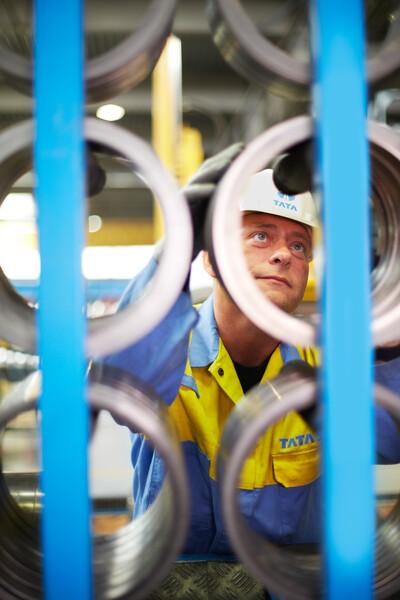The Product Platform Rulebook is a live, open-access document that provides guidance and support for the construction industry to make construction platforms a reality. It was first published by the Construction Innovation Hub (CIH) in May 2022, with seven rules.
The Government has set out its ambitions, in documents such as the Construction Playbook, for platform construction. It sees modern methods of construction (MMC), and the standardisation offered by construction platforms specifically, as a way to deliver schools, hospitals and other public projects more efficiently and with lower environmental impact.
The construction industry supply chain can use the Rulebook’s Development Framework to develop product platforms and see them adopted. There are also a series of case studies – including the Seismic II project – to provide tangible examples of platforms in action. As a live document, it’s intended that further case studies will be added over time.
Product Platform Rulebook rule 1: Deployable
A concern with design for manufacture and assembly (DfMA) and construction platforms is that standardisation will stifle architectural freedom and result in buildings looking the same.
The first rule is designed to ensure that platforms can be applied across “multiple, non-identical assets”. Buildings should not suffer from ‘cookie cutter’ repetition. A platform must be able to provide the flexibility needed to achieve good design and meet an individual building’s needs.
Product Platform Rulebook rule 2: Configurable
To meet the needs of a given project, a platform must therefore also be configurable. If everything in a platform is standardised then the platform becomes rigid and inflexible, and customisation is made impossible.
Flexibility does not have to compromise efficiency. A configurable platform is one where standardisation has been identified, and repeatable elements and components are then offered that can meet the variable requirements of different building types.
Product Platform Rulebook rule 3: Common repeatable elements
The repeatable elements of construction platforms are not just physical. In addition to the ‘kit of parts’ and the production processes used to manufacture those parts, the Rulebook also defines knowledge, and people and relationships, as repeatable elements.
Commonality and repeatability remove one of the barriers of traditional construction. Currently, components and knowledge are often proprietary, or can’t easily be used as part of different systems. Product platforms improve productivity and reduce risk by allowing the common repeatable elements to be supplied by multiple, independent manufacturers.
Product Platform Rulebook rule 4: Interfaces
To promote interchangeability, defined and standard interfaces must form part of product platforms. The platform can then be integrated with other parts of the building, potentially from alternative suppliers without wholesale dependence on the platform provider.
Product Platform Rulebook rule 5: Quality
For the kind of integration that rule 4 aims to achieve, product platforms must meet a defined minimum quality standard. If materials, products and processes are not fit for purpose then construction platforms will never be able to deliver the improvements they are capable of.
Reliability requirements, organisational processes and procedures, and designed working life are all quality management measures that need to be in place for a platform to be used successfully throughout a building’s life cycle stages.
Product Platform Rulebook rule 6: Structured information
Information about products and how they’re deployed, and what organisational information the platform manufacturer has in place, must be available so that informed decisions can be made about adopting any given platform.
The Government’s Construction Playbook promotes an approach centred on outcomes. Rather than prescribing a process to follow, the end goal should be established and the best route to achieving that goal then selected. With structured information, a project team can assess whether a platform will help to achieve their outcome.
Product Platform Rulebook rule 7: Open
When platforms are open, they allow others to develop complementary products and services. This rule requires any party to be able to make, use or buy common repeatable elements for legitimate purposes.
Through this openness, barriers to adoption are lowered. As the Government’s ambition to procure more public platforms is realised, a trickle-down effect to increased private procurement should also be seen.
Future editions - Product Platform Rulebook rule 8: Circularity
Among the goals of procuring construction platforms for public projects are better efficiency, less waste, and contributing to the target of net zero carbon. Consuming fewer resources through the more efficient use of materials is key. Part of that means ensuring that materials and components have an ongoing life, preferably through refurbishment and reuse in the first instance, and then through recycling.
To be added to the second edition the eighth rule seeks to ensure that construction platforms aid the transition from the linear economy to the circular economy.
Construction platforms based around steel frames can be part of circular economic solutions. The strength and durability of steel means frame components can be highly optimised to first reduce the amount of steel required in a building.
The building can then easily be adapted to suit different use requirements. Components can also be disassembled for use on a different site, prolonging the service life of the frame across multiple buildings. If required, the frame components can eventually be recycled.
Tata Steel’s work on construction platforms includes involvement with initiatives such as the Platform Design Programme and the Seismic platform. Stay up to date on how we are contributing to proving the concept of construction platforms by signing up to our newsletter.














































































































































































